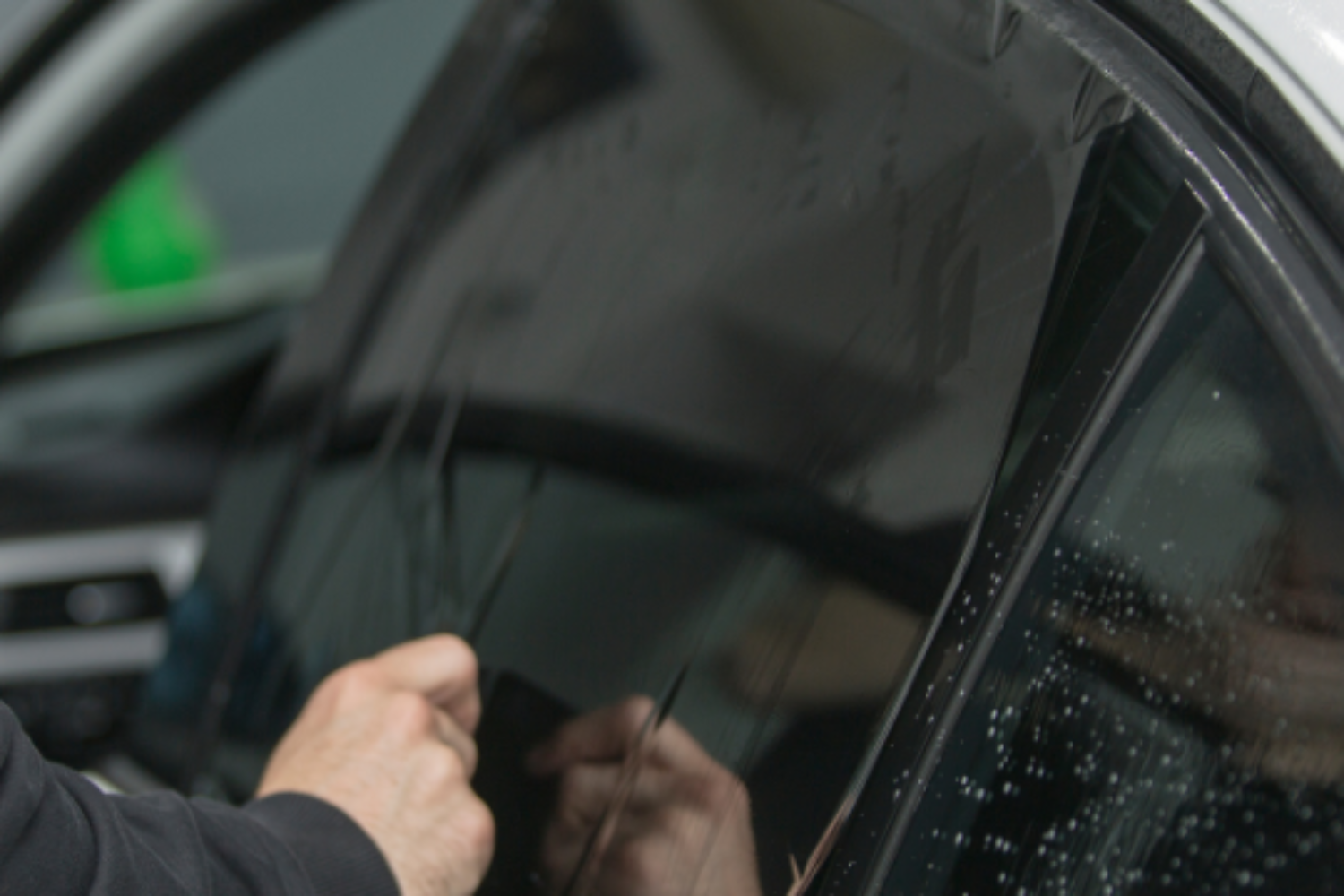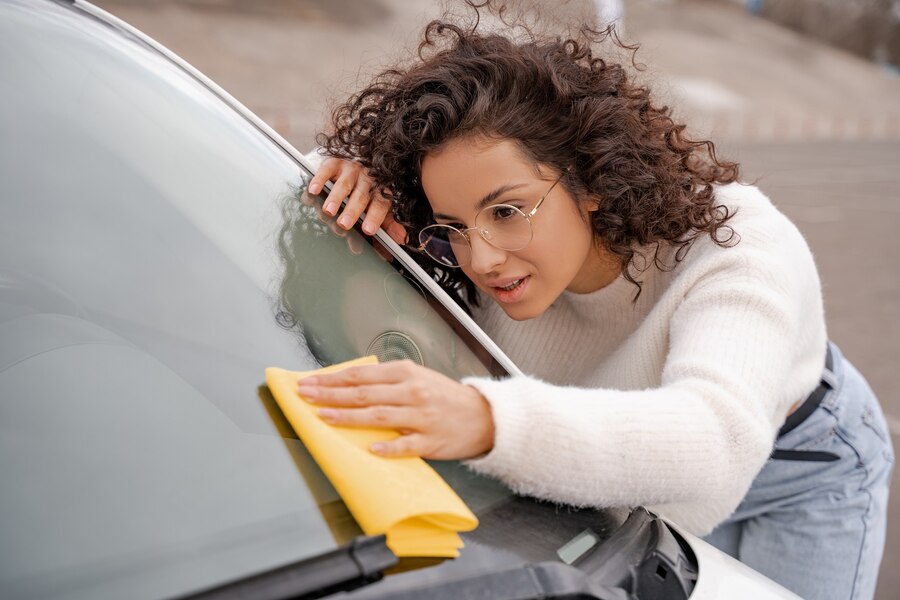Are you tired of stepping into a sweltering car during the summer months? Do you find yourself blasting the air conditioning just to get some relief from the heat? If so, you’re not alone. Many drivers struggle to keep their vehicles cool and comfortable, especially when temperatures soar.
Fortunately, there’s a solution that can help you beat the heat and enjoy a more comfortable drive: automotive window tinting. Window tinting offers more than just a sleek look; it provides a range of benefits that can enhance your driving experience.
In this blog post, we’ll explore the world of automotive window tinting and how it can help you stay cool on the road. From understanding how tinting works to choosing the right tint for your needs, we’ll cover everything you need to know to make an informed decision about tinting your vehicle’s windows.
We’ll also delve into the different types of tint films available, including dyed, metalized, and ceramic options, and discuss the advantages and disadvantages of each. Additionally, we’ll explore the benefits of tinting beyond heat reduction, such as UV protection, glare reduction, and enhanced privacy.
Whether you’re looking to improve your driving comfort or protect your vehicle’s interior from UV damage, window tinting could be the solution you’ve been searching for. So sit back, relax, and join us on the road to a cooler, more comfortable drive.
Understanding Heat Rejection
Understanding heat rejection is crucial when it comes to choosing the right automotive window tint for your vehicle. Heat rejection refers to the ability of the tint film to reduce the amount of heat that enters your car through the windows. This is particularly important in hot climates or during the summer months when the interior of your vehicle can become uncomfortably hot.
Window tint works by reflecting or absorbing the sun’s rays before they can pass through the glass and into the interior of your car. The amount of heat that a tint film can reject is measured by its Solar Heat Gain Coefficient (SHGC), which indicates the percentage of solar heat that is blocked by the tint. The lower the SHGC value, the more heat the tint can reject.
There are several factors that can affect the heat rejection capabilities of a tint film. The type of tint film, such as dyed, metalized, or ceramic, can impact its heat rejection properties. Ceramic tint films, for example, are known for their high heat rejection capabilities and are often preferred for their superior performance in hot climates.
In addition to reducing heat, tinted windows can also help protect your vehicle’s interior from sun damage and fading. They can also improve the overall comfort of your drive by reducing glare and providing added privacy. Overall, understanding heat rejection and choosing the right tint film for your vehicle can make a significant difference in your driving experience, especially in hot weather.
Types Of Tint Films
There are several types of tint films available for automotive windows, each with its own characteristics and benefits. Here are the main types:
- Dyed Tint Film: This type of film is created by placing a layer of dye between an adhesive layer and a protective top coating. Dyed tint films are known for their ability to block sunlight and reduce glare. They are also more affordable compared to other types of tint films. However, they are less effective at blocking heat compared to other types.
- Metalized Tint Film: Metalized tint films contain small metallic particles that reflect heat and UV rays away from the vehicle. These films are more effective at blocking heat compared to dyed films and can also improve the strength of the window glass. However, they can interfere with electronic devices like GPS and cell phone signals.
- Carbon Tint Film: Carbon tint films are known for their matte finish and their ability to block around 40-50% of infrared radiation. They are more durable than dyed films and do not fade over time. Carbon films provide good heat rejection and are less likely to interfere with electronic devices compared to metalized films.
- Ceramic Tint Film: Ceramic tint films are considered the highest quality tint films available. They are made by layering ceramic particles on the film. Ceramic films offer superior heat rejection, UV protection, and glare reduction. They also do not interfere with electronic devices. However, they tend to be more expensive than other types of tint films.
When choosing a tint film, consider your priorities such as heat rejection, UV protection, and budget, to select the type that best suits your needs.
Choosing The Right Tint For Your Needs
Choosing the right tint for your automotive needs involves considering several key factors to ensure you achieve the desired outcome. Here’s a detailed guide to help you make an informed decision:
- Legal Considerations: Check your local regulations regarding window tinting to ensure compliance with tint darkness and reflection laws. Some areas have restrictions on the tint percentage for different windows.
- Type of Tint Film:
- Dyed Tint: Offers basic protection from UV rays and glare reduction, but may fade over time.
- Metalized Tint: Provides better heat rejection and durability, but can interfere with electronic signals like GPS and cell phone reception.
- Ceramic Tint: Offers superior heat rejection, UV protection, and clarity without interfering with signals, but tends to be more expensive.
- Tint Percentage:
- Consider the darkness or lightness of the tint (measured in percentage) based on your preference and legal limits.
- Darker tints provide more privacy and heat rejection but may not be suitable for night driving.
- UV Protection:
- Look for tint films that offer high UV protection to safeguard your skin and interior from UV damage.
- Heat Rejection:
- Choose a tint with a high Solar Heat Gain Coefficient (SHGC) for better heat rejection, especially in hot climates.
- Aesthetic Appeal:
- Consider how the tint will enhance the overall look of your vehicle, matching its style and color.
- Professional Installation:
- Ensure the tint is installed by professionals to avoid bubbling, peeling, or improper application.
- Warranty:
- Check for warranties on the tint film to cover any defects or issues that may arise after installation.
By considering these factors, you can select the right tint for your vehicle that meets your needs for heat rejection, UV protection, aesthetics, and legal compliance.
Beyond Heat: Additional Benefits Of Tinting
Beyond heat reduction, automotive window tinting offers a range of additional benefits that can enhance your driving experience and protect your vehicle. These benefits include:
- UV Protection: Tinted windows can block up to 99% of harmful UV rays, helping to protect your skin from sun damage and reducing the risk of skin cancer. They also help to prevent your vehicle’s interior from fading and cracking due to sun exposure.
- Glare Reduction: Tinted windows can reduce glare from the sun, headlights, and other reflective surfaces, making it easier and safer to drive, especially at dawn, dusk, or in bright sunlight.
- Enhanced Privacy: Tinted windows provide an additional layer of privacy by making it more difficult for people outside the vehicle to see inside. This can help protect your belongings from theft and give you a greater sense of security while driving or parked.
- Safety and Security: In the event of an accident, tinted windows can help hold shattered glass together, reducing the risk of injury from flying glass shards. They can also deter break-ins by making it harder for thieves to see inside your vehicle.
- Improved Comfort: By reducing heat and glare, tinted windows help to create a more comfortable driving environment, especially during hot weather. This can help you stay cool and focused while driving.
Overall, automotive window tinting offers a range of benefits beyond just heat reduction, making it a valuable investment for both you and your vehicle.
Maintaining Tint For Longevity
Maintaining your tinted windows is essential for ensuring their longevity and optimal performance. Here are some tips to help you care for your tinted windows:
- Gentle Cleaning: Use a soft, non-abrasive cloth or sponge and a mild cleaning solution to clean your tinted windows. Avoid using harsh chemicals or abrasive materials that could scratch or damage the tint film.
- Regular Cleaning: Regularly clean your tinted windows to remove dirt, dust, and grime that can accumulate on the surface. This can help prevent the tint from becoming discolored or damaged over time.
- Avoid Ammonia-Based Cleaners: Ammonia-based cleaners can damage the tint film, causing it to bubble or peel. Instead, use cleaners that are specifically designed for tinted windows or make your own using mild soap and water.
- Do Not Use Sharp Objects: Avoid using sharp objects such as razor blades or knives to remove stickers or decals from your tinted windows, as this can cause damage to the film. Instead, use a plastic scraper or your fingernail to gently lift the sticker.
- Professional Maintenance: Consider having your tinted windows professionally cleaned and inspected regularly. Professionals can identify any issues early on and provide maintenance services to keep your tint looking its best.
By following these tips, you can help maintain the longevity of your tinted windows and ensure that they continue to provide you with the benefits of heat rejection, UV protection, and enhanced privacy for years to come.
In conclusion, automotive window tinting offers a wide range of benefits, from heat rejection and UV protection to improved comfort and privacy. Understanding the importance of heat rejection and choosing the right tint film for your needs can make a significant difference in your driving experience, especially in hot climates or during the summer months.
To ensure the longevity of your tinted windows, it’s important to follow proper maintenance practices, such as gentle cleaning and avoiding harsh chemicals. Additionally, considering professional maintenance services can help keep your tint looking its best and performing optimally for years to come.
If you’re ready to experience the benefits of automotive window tinting for yourself, we encourage you to contact us today. Our team of experts can help you choose the right tint film for your vehicle and provide professional installation services to ensure the best results. Don’t wait any longer to start enjoying a cooler, more comfortable drive – tint your windows today!
Contact us now to schedule an appointment and experience the road to comfort with tinting solutions that make a difference.





